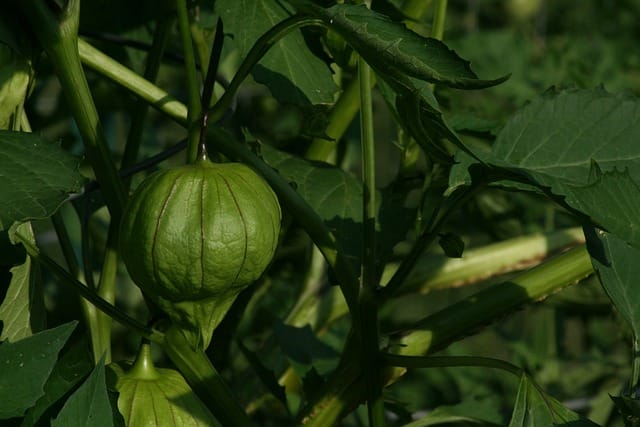How to grow Tomatillos
Growing your own vegetables can be a rewarding experience, and if you're looking to add some unique flavors to your garden, tomatillos are a great choice

In this article:
Introduction
Growing your own vegetables can be a rewarding experience, and if you're looking to add some unique flavors to your garden, tomatillos are a great choice. This article will guide you on how to successfully grow tomatillos, from selecting the right varieties to harvesting and storing them.
What are Tomatillos?
Tomatillos are small, round fruits encased in papery husks. They are commonly used in traditional Mexican cuisine to make salsa verde and other flavorful dishes. These plants are part of the nightshade family and are closely related to tomatoes.
Choosing the Right Varieties
When selecting tomatillo varieties, consider the climate and the space available in your garden. Some popular varieties include Purple de Milpa, Grande Rio Verde, and Toma Verde. Check with local nurseries or gardening centers to find varieties that are well-suited to your region.
Soil Preparation and Planting
Tomatillos thrive in well-drained soil with plenty of organic matter. Amend the soil by incorporating compost or well-rotted manure before planting. Choose a sunny spot in your garden with at least 6-8 hours of sunlight per day. Sow the seeds directly into the soil or begin with transplants, ensuring they are spaced about 2-3 feet apart.
Watering and Fertilizing
Tomatillos require regular watering, especially during dry spells. Water deeply, but avoid overwatering as it can lead to fungal diseases. Applying a balanced fertilizer once a month can help promote healthy growth and fruit production. Be sure to follow the instructions on the fertilizer package.
Managing Pests and Diseases
Common pests that may affect tomatillos include aphids, flea beetles, and tomato hornworms. Regularly inspect your plants for any signs of infestation, and if necessary, use organic pest control methods such as neem oil or insecticidal soap. Additionally, proper spacing between plants can reduce the risk of diseases like leaf spot or blight.
Pruning and Supporting
Tomatillos benefit from pruning to encourage better air circulation and reduce the risk of diseases. Remove any lower leaves or suckers to improve airflow. Additionally, these plants tend to sprawl, so providing support such as stakes or cages can help maintain proper plant structure and make harvesting easier.
Harvesting and Storing
Tomatillos are ready for harvest when the husks split open and the fruits are firm and bright green. Gently twist or cut the tomatillos from the plant, leaving the husks intact. You can store them in a cool and dry place for a few weeks or use them immediately in your favorite recipes.
Delicious Tomatillo Recipe Ideas
Here are some delicious tomatillo recipe ideas to make the most of your harvest:
- Salsa Verde: Blend tomatillos with onions, garlic, jalapenos, and cilantro for a tangy and flavorful salsa.
- Tomatillo Guacamole: Combine mashed avocados with tomatillos, lime juice, and spices for a unique twist on traditional guacamole.
- Tomatillo and Chicken Enchiladas: Roll shredded chicken and cheese in corn tortillas and top with a tomatillo sauce before baking.
Conclusion
Growing tomatillos can add a new dimension to your garden and culinary experiences. With proper care and attention, you can enjoy a bountiful harvest of delicious tomatillos to use in a variety of recipes. Enjoy the process and embrace the flavors that tomatillos bring to your table!
